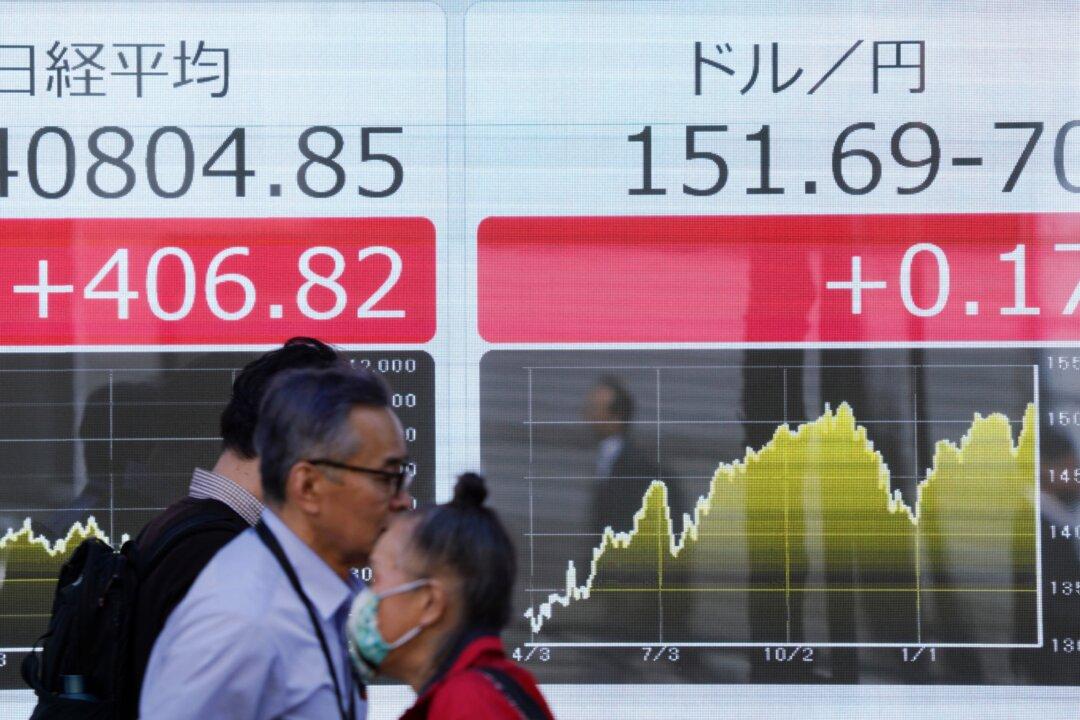The Bank of Japan (BOJ) recently transitioned away from its negative interest rate policy, a notable departure from the expansive quantitative easing strategy that had been a cornerstone for the past 17 years. Despite expectations, the yen experienced a further decline rather than an appreciation following this policy shift. Concurrently, the Japanese stock market witnessed remarkable growth, with the Nikkei Index achieving new highs on two successive days, even briefly surpassing the 41,000-point mark.
Behind the Yen’s Persistent Weakness Post-BOJ Rate Increase
On March 19, the BOJ announced at its monetary policy meeting the conclusion of its broad easing measures initiated in 2016. This decision encompassed ending the negative interest rate policy by adjusting the rate from -0.1 percent to between 0 and 0.1 percent, continuing the purchase of long-term government bonds, and ceasing the addition of new exchange-traded funds (ETFs) purchases from exchanges. This move aligned with market anticipations.BOJ Governor Kazuo Ueda, during a press briefing, remarked that the bank’s 2 percent inflation target, set at the initiation of the easing policy, had been met. He noted the emergence of a positive feedback loop between wages and prices, signaling economic strengthening.
However, the yen, typically sensitive to shifts in interest rates, declined by 0.4 percent against the dollar to 149.69 to 1 on the announcement day. By March 26, it had weakened to 151.26 yen per dollar, nearing the previous year’s record low of 151.9 yen.
Market analysts suggest that the BOJ might still leverage its easing policy framework. With the Federal Reserve’s reduced emphasis on rate cuts, the substantial interest rate gap of approximately 5 percent between the United States and Japan hints at a sustained trend of yen selling in favor of dollar buying for arbitrage purposes, thus limiting any immediate strengthening of the yen.
Simultaneously, Mr. Ueda indicated that the bank anticipates maintaining a relaxed financial environment for the time being, suggesting no rush to escalate interest rates further.
Additionally, with expectations for the U.S. to uphold higher policy interest rates over an extended period, Goldman Sachs revised its forecast for the Federal Reserve’s rate reductions from four to three this year, following a February Consumer Price Index (CPI) report that signaled heightened inflationary pressures.
Yen’s Depreciation Catalyzes a Surge in Japanese Stocks
The falling yen has notably benefited Japan’s export sectors, sparking a rally in the stock market. On March 22, as the yen dipped to approximately 151.8 to 1 against the dollar, shares in export-driven industries like automotive saw significant gains, propelling the Nikkei Index to briefly exceed the 41,000-point milestone. In the subsequent week, the Index consistently remained above the 40,000-point threshold.For instance, Toyota stands to gain approximately 45 billion yen (about 297 million dollars) for every yen the currency weakens against the dollar. Despite the higher costs for import-dependent industries, the broader market trend is upward, fueling the stock market’s vitality and underpinning substantial wage increases by Japanese firms.

Additionally, the yen’s devaluation effectively discounts Japanese assets, attracting foreign investment into the nation’s stock market.
Hideto Fujino, founder and Chief Investment Officer of Rheos Capital Works, offered his analysis of the buoyant Japanese stock market on his YouTube channel, noting the undervaluation of Japanese companies and stocks. He attributed the robust market performance since the year’s start to prolonged monetary easing and perceived investment security, anticipating continued growth albeit with potential price adjustments.
Western ‘Decoupling’ Strategy Reshapes Japan’s Economic Landscape
Over the past two years, Japan has seen a notable improvement from deflation and experienced a significant rebound in its stock market. This resurgence culminated in the Nikkei Index breaking the bubble economy era’s record high of 38,915 points on Feb. 22 of this year and astonishingly reaching a historic 40,000 points for the first time on March 4. This year-long rally reflects growing investor confidence in Japan’s economic revival and future growth prospects.Many analysts now believe that after more than three decades of structural adjustments, Japan’s economy is on the mend and poised for growth. Ryoji Musha, a prominent Japanese investment strategist and president of Musha Research, credits geopolitical tensions as the catalyst for Japan’s economic recovery.
He highlights the West’s strategic pivot towards encircling the CCP and a significant shift towards decoupling from China’s industrial chains, especially in high-tech sectors like semiconductors. According to Mr. Musha, this shift positions Japan as a principal beneficiary of these global changes.
In Musha Research’s “Strategy Report No. 333,” published on June 5, 2023, Musha elaborates on the consensus across the political spectrum in the United States, from both Republicans and Democrats, viewing the CCP as a formidable threat. This consensus has elevated the containment of China to a paramount national concern, fundamentally altering Japan’s trajectory.
Following a meeting between then-Prime Minister Yoshihide Suga and President Biden in April 2021, a joint statement between Japan and the United States underscored a commitment to semiconductor industry cooperation and other “decoupling” initiatives from China.
Shortly after, the ruling Liberal Democratic Party’s Semiconductor Council was formed, championed by key party figures Akira Amari, Shinzo Abe, and Taro Aso, earmarking an investment of 10 trillion yen (about $66 billion) for this purpose.
In a significant step towards reinforcing this collaboration, the late Prime Minister Shinzo Abe, during a trilateral forum hosted by Taiwan, underscored the strategic importance of Taiwan’s security to Japan, echoing sentiments of shared crisis between the two nations.
Reflecting on the 1980s, Japan once led the global semiconductor industry, a period when Japanese firms dominated global sales. Despite shifts in the semiconductor market landscape following trade disputes with the United States, Japan has maintained a pivotal role in semiconductor materials and precision machinery, laying the groundwork for a resurgence in this critical sector.








